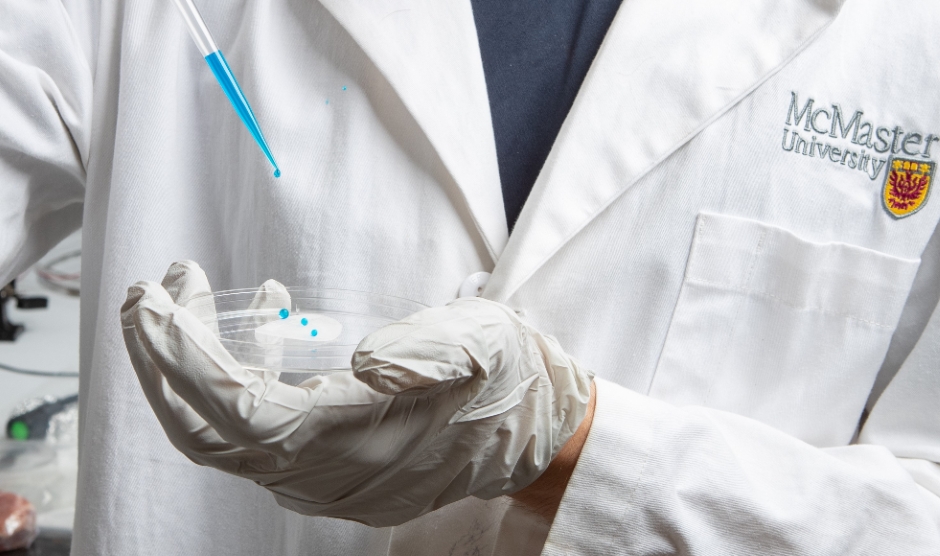The team from McMaster University, Canada, describe their material as ‘a flexible plastic wrap that combines a hierarchical wrinkled structure with chemical functionalisation to reduce bacterial adhesion, biofilm formation, and the transfer of bacteria through an intermediate surface.’
They add that it can be shrink-wrapped onto door handles, railings, IV stands and other surfaces that harbour bacteria such as MRSA and C. difficile. The treated material can be used also for food packaging, where it could stop the accidental transfer of bacteria such as E. coli, Salmonella and listeria from raw chicken, meat and other foods. The research is described in a paper published in ACS Nano.
Antimicrobial resistance: a call to arms
Engineering a superbug fightback
The research was led by engineers Leyla Soleymani and Tohid Didar, who collaborated with colleagues from McMaster’s Institute for Infectious Disease Research and the McMaster-based Canadian Centre for Electron Microscopy.
Reportedly inspired by the water-repellent lotus leaf, the new surface works through a combination of nanoscale surface engineering and chemistry. The surface is textured with microscopic wrinkles that exclude all external molecules. A drop of water or blood, for example, bounces away when it lands on the surface, and the same is true for bacteria.

“We’re structurally tuning that plastic,” Soleymani said in a statement. “This material gives us something that can be applied to all kinds of things.”
The surface is also treated chemically to further enhance its repellent properties, resulting in a barrier that is flexible, durable and inexpensive to reproduce.
“We can see this technology being used in all kinds of institutional and domestic settings,” Didar said. “As the world confronts the crisis of anti-microbial resistance, we hope it will become an important part of the anti-bacterial toolbox.”
The researchers tested the material using two forms of antibiotic-resistant bacteria: MRSA and Pseudomonas, in collaboration of Eric Brown of McMaster’s Institute for Infectious Disease Research.
Engineer Kathryn Grandfield helped the team verify the effectiveness of the surface by capturing electron microscope images showing that virtually no bacteria could transfer to the new surface.
The researchers are now looking to develop commercial applications for the wrap.




Glasgow trial explores AR cues for autonomous road safety
They've ploughed into a few vulnerable road users in the past. Making that less likely will make it spectacularly easy to stop the traffic for...